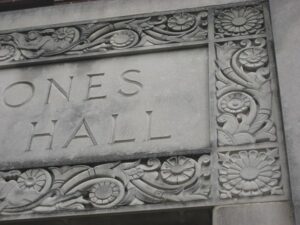I have written at length about the risks that general obligation bonds pose to the institutions that issue them. When that institution is a community college, these bonds pose a risk to the residents who live in the community college district.
General obligation bonds don’t have a dedicated tax stream to pay them off. The voters don’t get to vote on these bonds; however, they do get to bear the full financial risk that goes along with them.
Trustees never seem to consider the inherent unfairness of forcing the taxpayers to back bond issues that they weren’t given the opportunity to approve or reject. Almost without exception, these bond issues fund construction projects that would not pass muster at the ballot box. So, rather than asking, Trustees simply issue debt.
They rationalize it in a number of ways, including claims that the building will pay for itself, or that it is cheaper to replace a building than it is to rehab it. At some point in a building’s lifespan, that statement is true, but it is infinitely cheaper to take care of a building properly and promptly than it is to either rehab it or replace it.
Community college administrators never seem to be able to come up with the money to properly maintain campus buildings, but they can always manage to find the money to build new ones. Their favorite tactic is to convince the trustees to sign off on general obligation bonds.
While they’re willing to use the general fund to guarantee the repayment of these bonds, they’re much less willing to cut general fund expenditures to make sure there’s enough money to actually make the payments.
General obligation bonds could be a ticking time bomb
When their optimistic budget forecasts and enrollment projections don’t pan out, the Administration is left with the single-choice option of raising student tuition and fees to pay for their mismanagement. At WCC, it never fails – general obligation bond issues are followed soon after by substantial increases in the tuition rates. On the other hand, tuition remains quite level when campus construction projects get paid for using bonds the voters have approved.
When students are forced to pay the cost of general obligation bond issues, enrollment declines in the 1-2 years following the bond issue. Women and minority students are hit the hardest by large tuition increases, and often leave school without completing a degree.
In a good economy, some community colleges can pull off this schtick because generous property tax proceeds can cover even more than student tuition can. In a bad or uncertain economy, however, these “secret” bond issues pose an unacceptable risk to students and taxpayers alike. While the economy can turn from good to bad in a matter of months, general obligation bond issues remain until they’re paid off – often 20-30 years. That’s a long time to suffer the consequences of poor management.
Community college trustees have either become timid about asking the voters to approve new taxes, or they have become apathetic to the risks that general obligation bonds entail. Regardless of why this has happened, communities are at increased risk from these bond issues that have been guaranteed by the voters without their consent.
That is the very definition of taxation without representation , and it needs to stop.
Photo Credit: Dejan Krsmanovic , via Flickr





































